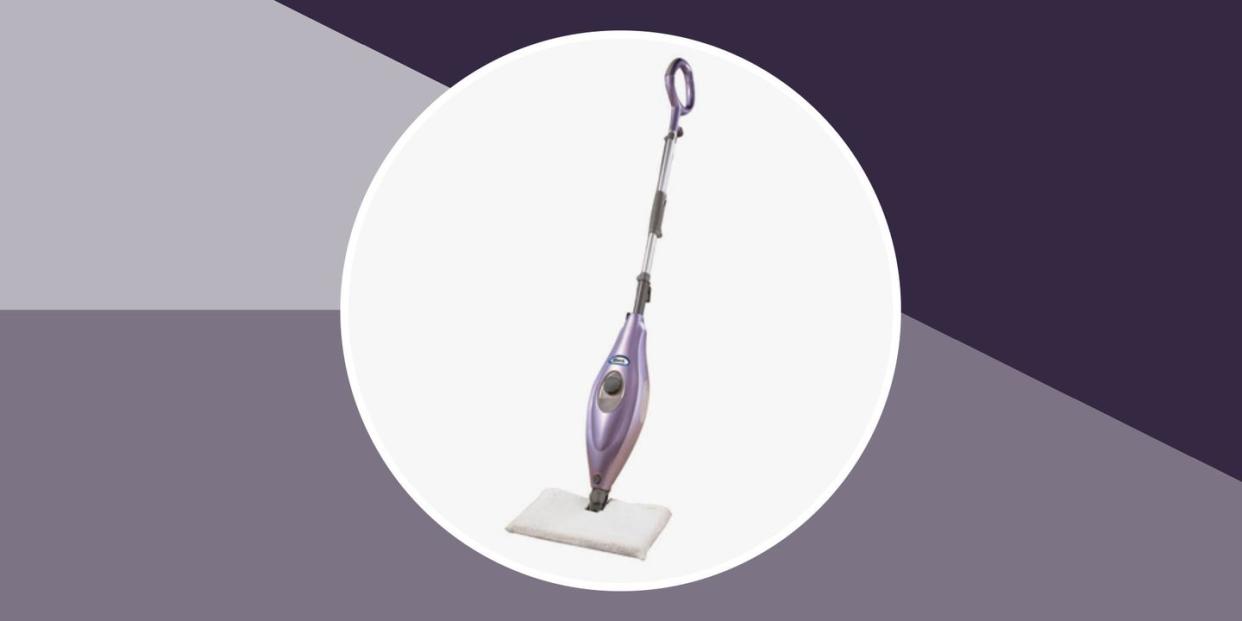The 5 Best Steam Mops To Make Your Hard Floors Sparkle

For sparkling clean floors without the need for chemical cleaners, steam mops are the answer. Using hot steam to remove grime from floors, steam mops claim to work without the need for traditional floor-cleaning formulas, but still remove tough, dried-on stains along with everyday dust and dirt. Plus, because the steam reaches high temperatures, these mops can sanitize and disinfect germy areas like bathroom floors and pet spaces, with just a few slow passes.
In our Good Housekeeping Cleaning Lab tests, we've found steam mops are very effective at loosening and removing even stuck-on stains like jelly, chocolate syrup, and muddy footprints from bare floors with just a few passes. Below, we've listed the features we've found to be most helpful and what floors steam mops work best on along with the mops we recommend based on our testing or models from brands that have performed well in previous tests.
When we test steam mops in the Good Housekeeping Cleaning Lab, we evaluate them for how quickly they heat up, how much steam they produce, how well they remove dried-on sticky and greasy messes from ceramic tile floors, how quickly the floor dries after cleaning, and how easy they are to fill, use and store.
How do steam mops work?
Steam mops work by heating the water inside a chamber and dispensing it as steam. A reusable microfiber pad or a disposable cloth attached to the head helps disperse the steam across the floor. As the steam penetrates and softens the grime on your floor, the pad picks it up and traps it. Then, you either toss the cloth or wash and reuse the pad.
One key benefit of using a steam mop over a traditional mop is that it's an all-in-one system. Aside from the pad, there are no separate cleaners to buy and store and no heavy buckets to fill and empty. And since the pad gets tossed or washed when you're done, steam mops are neater and easier to store than messy, drippy string or sponge mops. Finally, unlike just about every other type of floor mop, steam mops reach temperatures high enough kill germs and bacteria on hard surfaces. Just pass them slowly in areas you want to sanitize to give the steam time to do its job.
What is the best steam mop for you?
Consider switching to a steam mop if you have a busy household with lots of foot traffic and need to wash your floors often, as it will streamline your cleaning routine and save you from having to buy and stock up on floor-cleaning formulas. Steam mops can also provide a deeper clean in homes where kids or pets like to play and lie on the floors. And the fact that they kill germs can give you peace of mind that your floors are really clean for these family members. Finally, if you just want to cut down or eliminate some of the cleaning products in your home, switching to a steam mop is an easy fix.
There are two main types of steam mops: Those that produce steam-on-demand, meaning you have to pull a trigger or press a button when you want the steam to dispense, and those that produce continuous steam, meaning once it heats up, the steam keeps pumping. Which you choose is a matter of personal preference. We think continuous steamers requires less effort, but it is nice to be able to give an extra burst of steam when you come across a stubborn stain or scuff.
Other features we like include adjustable steam. Some models offer low, medium, and high steam levels to better clean and care for more delicate or extra durable floors or to raise or lower the steam levels to suit the cleaning job at hand. We also recommend looking for removable, easy-to-fill water tanks with large openings, a swivel head to more easily navigate around corners and table and chair legs, a low profile design to maneuver under cabinet toe-kicks and low furniture, an extra-long cord for extended reach and multiple cleaning pads so you always have a clean one to put on when the one you're using gets too dirty.
Are steam mops safe for tile, laminate, and hardwood floors?
Steam mops are generally safe for vinyl, ceramic and porcelain tile floors, however it is always a good idea to check with your flooring brand to be sure using steam won't void your floor's warranty. And keep in mind that steam alone likely won't whiten dirty or stained grout lines. Never use a steam mops on any unsealed, peeling or unfinished floors and even though mop manufacturers claim it is safe, we caution against using them on wood and laminate floors, too.
You Might Also Like
